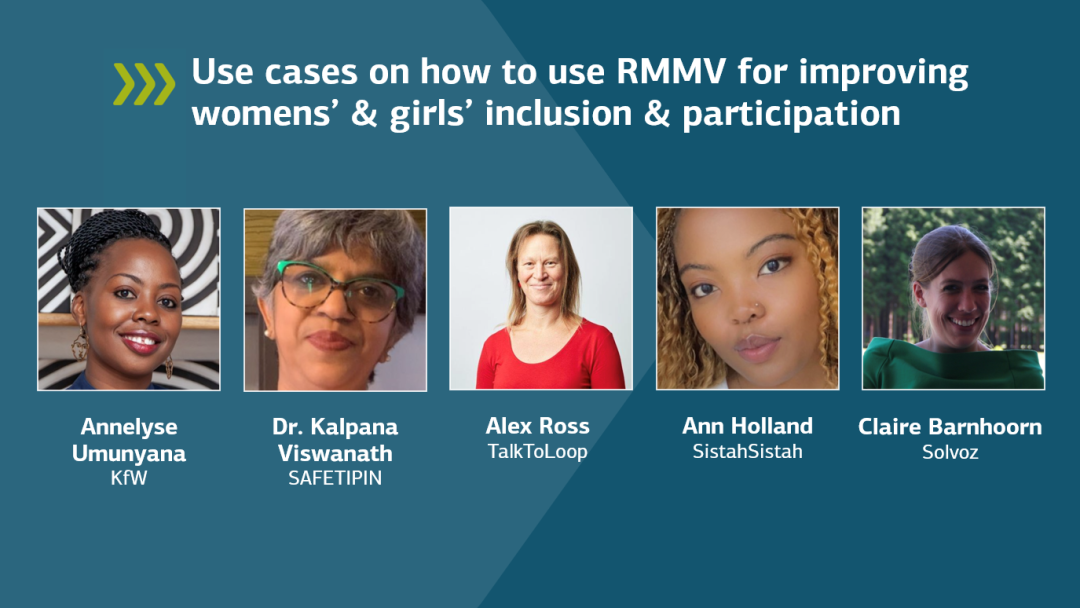Women and girls have significantly less access to digital tools in many countries around the world. This has to change, because digitalisation offers them many opportunities. Apps enable mutual exchange, can tell them which route home is safer, or provide assistance to survivors of gender-based violence. At the RMMV Conference of KfW and the Federal Ministry for Economic Cooperation and Development (BMZ) in February 2023, digital solutions were presented that make it easier for women and girls to participate in shaping their lives and their environment.

What is the safest way for me to get home from the bus stop? Which routes are well lit? Where are many other pedestrians on the road late in the evening? Questions that women and girls around the world often ask themselves when planning their routes. In cities such as Rio de Janeiro, Cape Town, Mombasa or Hyderabad in India, the “SAFETIPIN” app offers support here. The data that serve as a basis for assessing a location as safe or unsafe are reported by the women and girls themselves via their mobile phones, supplemented with conventional surveys by the municipalities and public transport operators and evaluated by machine learning. “We are working together with urban authorities to initiate change,” explains Dr Kalpana Viswanath, co-founder and CEO of SAFETIPIN.
The first successes have already been achieved with this method. In Delhi, where 4,000 kilometres of road have already been assessed, the municipality decided to improve lighting for notoriously hazardous roads. More video cameras and bicycle stands were installed in Bogotá. In future, data like this, based on crowdsourcing, could be a central component of public transport and municipal development projects that systematically focus on the needs of women and girls.
The Sistah Sistah Foundation from Zambia also addresses another use case. It supports victims of gender-based violence – a problem that grew rapidly worldwide during the COVID pandemic. The foundation provides assistance to many different public and private stakeholders – such as legal counsel or support from the youth welfare office. In doing so, it cooperates closely with the Dutch non-governmental organisation (NGO) Loop. The Loop communication platform gives mobile phone owners access to Sistah Sistah’s emergency hotline via Telegram, WhatsApp, Facebook and many more channels, not just in English but also in local languages. The platform can be used to provide assistance to other stakeholders, even if the police or other government agencies do not act. “We provide places in the women’s shelter, therapy and jobs,” emphasises Ann Holland, Co-Managing Director of the foundation. This has already helped many girls and women who would otherwise have been left without support.
In Nigeria, too, the NGO International Rescue Committee (IRC) found a solution to reach women and girls even in rural areas despite the lockdowns. An app was used to provide information about aid facilities, health stations and instructions for first responders.
The examples presented show what feminist development cooperation can look like in practice and the extent to which apps developed specifically for women that can be used remotely and anonymously make a significant contribution to empowering women and girls. The data from these types of platforms have the potential to become a central element of feminist development policy. In addition, Claire Barnhoorn, CEO of the Solvoz procurement platform, calls on donors to finally set standards and award criteria for their projects that explicitly take into account the proportion of women in companies and the management of the commissioned companies.